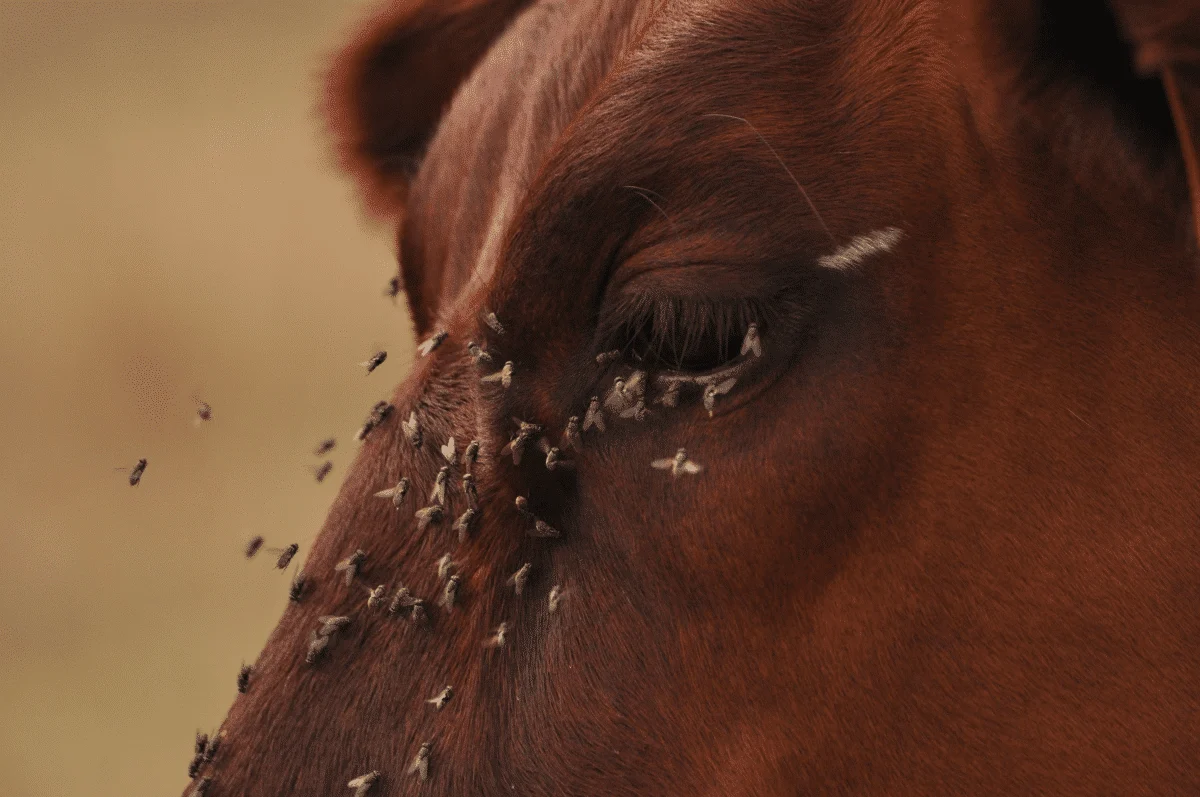In the intricate tapestry of nature, face flies emerge as pesky protagonists, buzzing around our four-legged friends with an inexplicable penchant for their eyes. While their name might evoke images of nuisance, there’s more to these bothersome insects than meets the eye. In this engaging exploration, we delve into the background of face flies, decipher their irritating habits, and unveil the mysteries behind their peculiar choices.
The Background Buzz on Face Flies
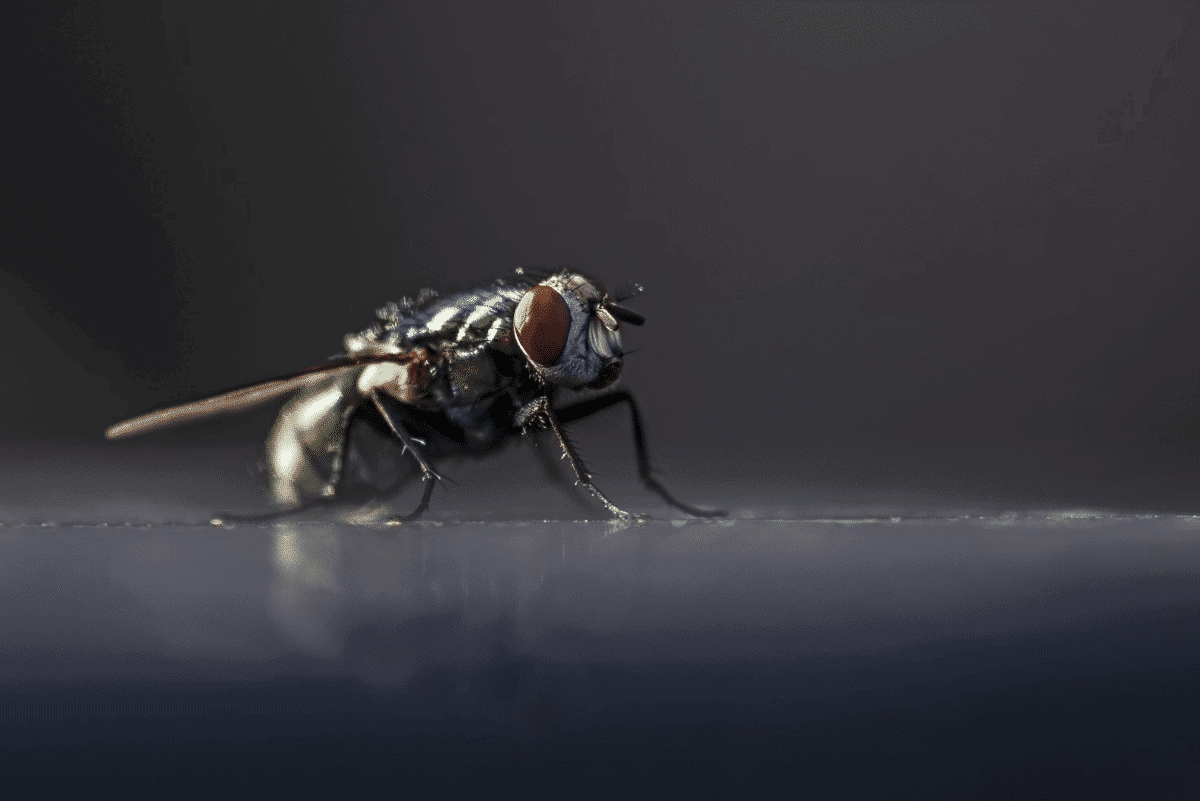
Face flies (Musca autumnalis) belong to the Muscidae family, joining the ranks of common houseflies. Originating from Europe, they made their way to North America in the 1950s, and since then, they’ve become an unwelcome guest in barns, pastures, and stables. While their smaller size may make them seem harmless, face flies are adept at making their presence felt, particularly around livestock.
Eye Irritation: The Juicy Secret
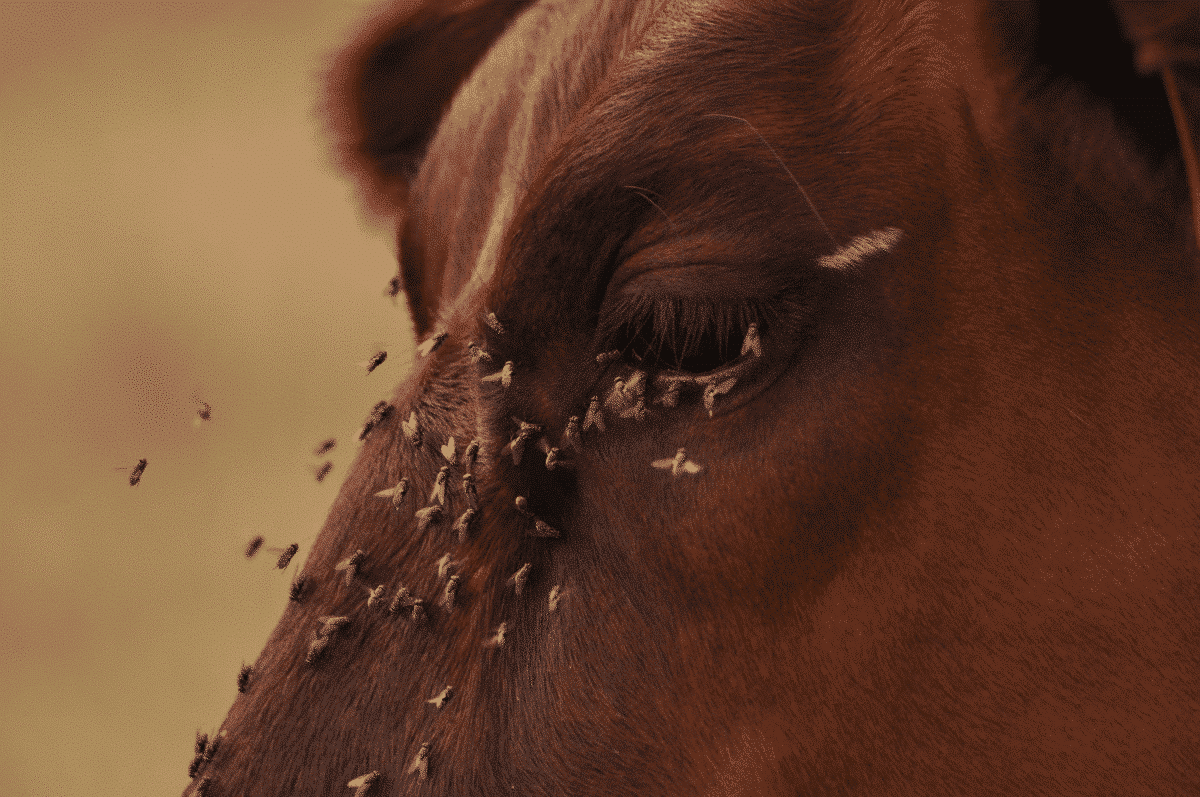
One of the most intriguing aspects of face flies is their peculiar predilection for animal eyes. While this might appear as mere annoyance, there’s a method to their madness. Face flies are notorious for irritating the eyes of their hosts, inducing the production of tears. Astonishingly, they have a taste for the lacrimal secretions, or eye juice, that results from this irritation. It’s not just a random act of vexation; it’s a calculated move to access a nutrient-rich resource.
Why the Ocular Obsession?
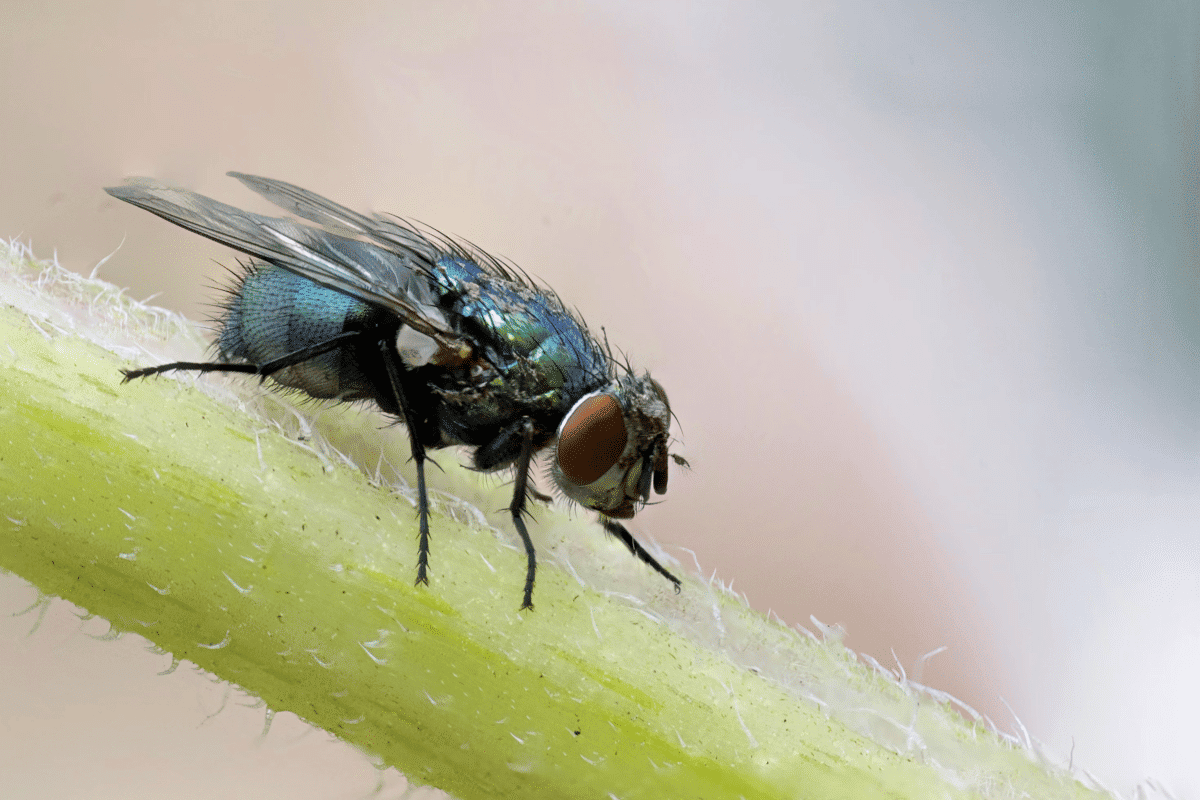
You might wonder why face flies zero in on the eyes of animals. The answer lies in their feeding habits. Unlike other flies that feed on decaying matter, face flies are more refined in their taste. They prefer fresh secretions from the eyes, noses, and mouths of animals. By targeting the eyes, they tap into a constant source of nourishment, exploiting the tears as both a nutrient-rich liquid and a clever way to soften their meals.
Dietary Preferences: Sipping on Eye Juice
Face flies, in their quest for the perfect meal, have developed a highly specialized diet. Their primary sustenance comes from the liquid secretions of their host animals. These secretions are not only a source of essential nutrients but also provide the moisture necessary for their survival. Unlike common houseflies that thrive on decomposing organic matter, face flies have evolved to become connoisseurs of the more refined liquid offerings produced by their hosts.
Family Planning: Where Do They Lay Eggs?
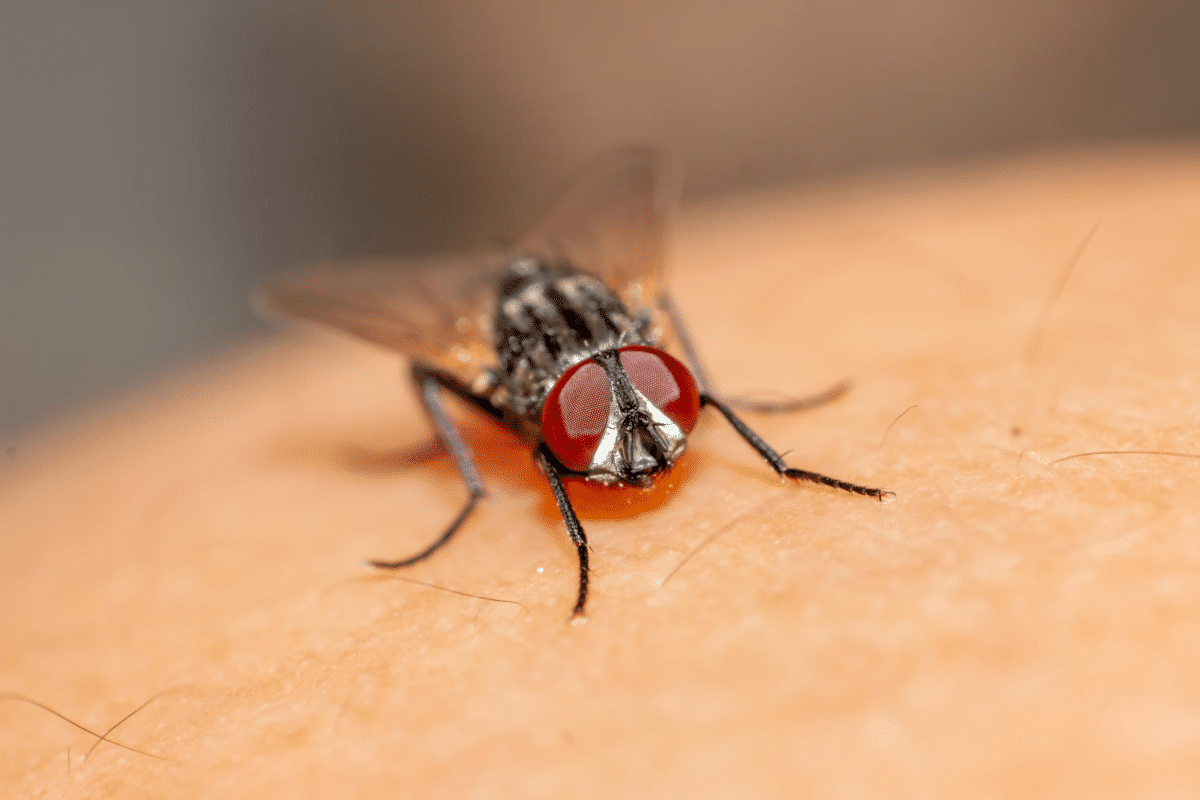
Understanding the life cycle of face flies unveils another aspect of their biology that contributes to their annoyance. Female face flies lay their eggs in and around the manure of their host animals. This seemingly unhygienic choice serves a crucial purpose in their reproductive cycle. The larvae, upon hatching, find nourishment in the decaying organic matter, kickstarting a life cycle that perpetuates their presence around livestock.
Putting an End to the Buzz: How to Get Rid of Face Flies
Now that we’ve uncovered the curious habits of face flies, the question arises: how do we rid ourselves of these persistent pests? Employing effective strategies to manage their presence is crucial for both animal well-being and human sanity.
1. Maintain Cleanliness: Face flies thrive in areas with ample organic matter, especially around manure. Regularly cleaning and properly disposing of manure can significantly reduce their breeding grounds.
2. Biological Control: Introducing natural predators, such as parasitic wasps or nematodes, can help control face fly populations. These predators target the larvae and pupae, interrupting the life cycle of these bothersome insects.
3. Insecticides: While not the first choice due to potential environmental impact, targeted and judicious use of insecticides can be an effective measure. Consultation with a pest control professional is advisable to ensure safe and responsible application.
4. Physical Barriers: Implementing physical barriers, such as fly screens or nets, can prevent face flies from gaining access to animals. This is particularly important in areas where livestock are kept in close quarters.
Wrapping Up with Face Flies Annoying Habits Explained
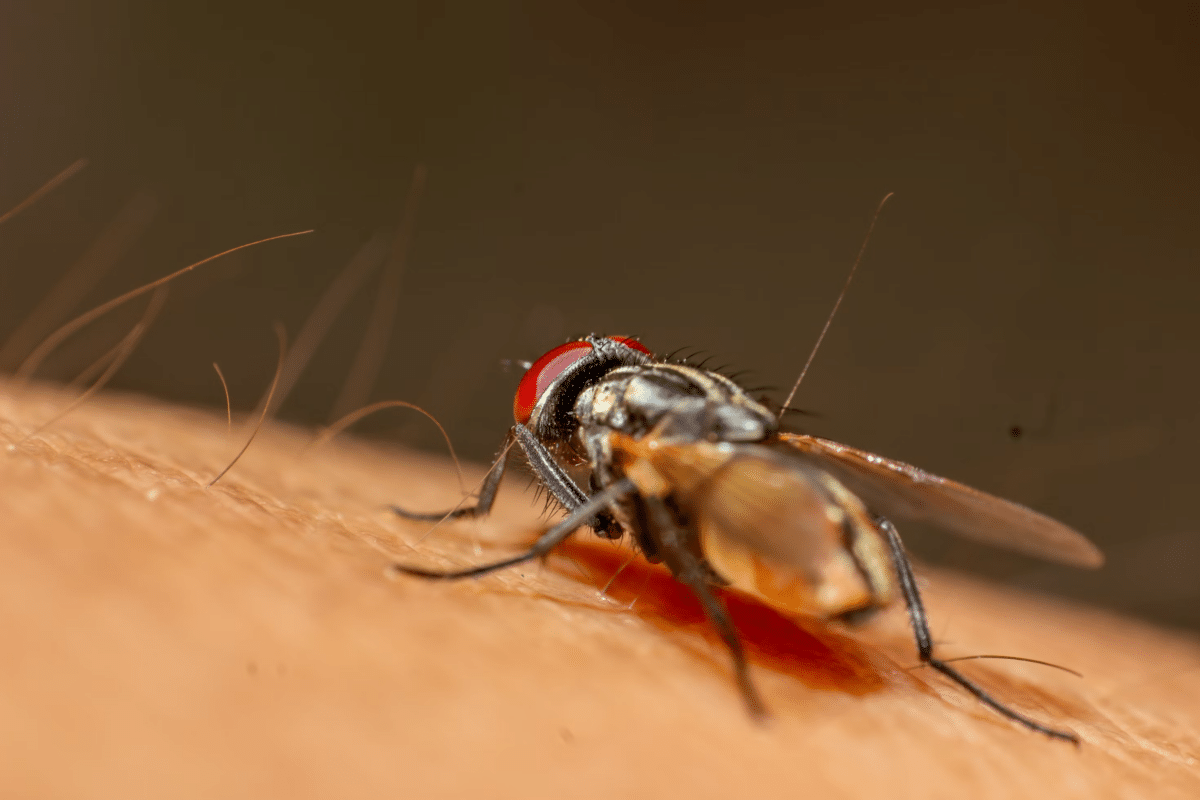
In the intricate dance of nature, face flies emerge as both peculiar and persistent players. Their habits, annoying as they may be, reveal a fascinating adaptation to their environment. Understanding the reasons behind their behavior not only enriches our knowledge but also equips us with the tools to manage their impact. As we navigate the delicate balance between coexistence and control, embracing the wonders of nature includes appreciating even the smaller, more bothersome creatures that share our space.
Thank you for following along with this article –
Next up in the animal kingdom:
Join our Forum for free today!

- Big Cats Love Mouthing Affection - July 22, 2024
- Kind Elephant Merciful To Lion Cubs - July 22, 2024
- Beachgoers Save Massive Shark Stranded In Florida - July 22, 2024

